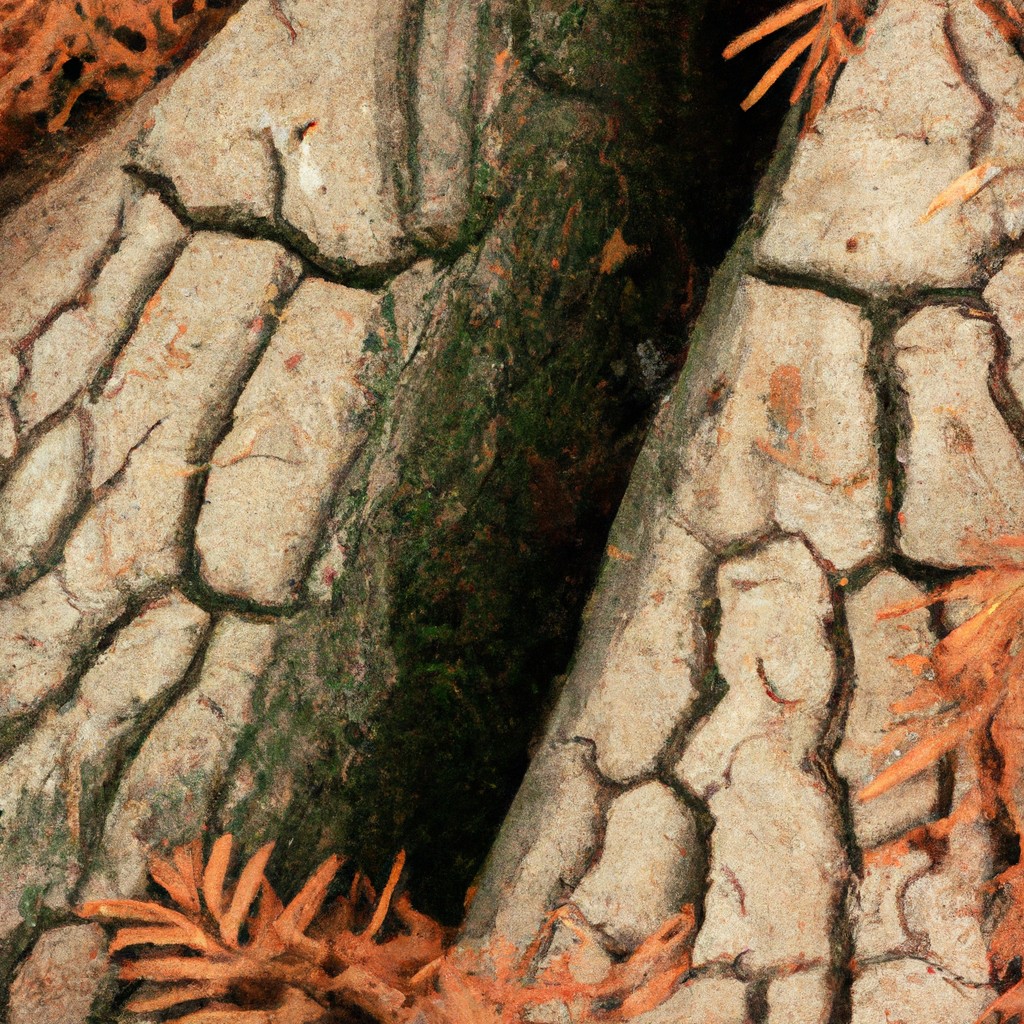Bald cypress is a deciduous coniferous tree native to the southeastern United States, known for its unique feature of producing ‘knees’ or upward-growing roots and its ability to thrive in wet, swampy conditions.
The bald cypress, scientifically known as Taxodium distichum, is a fascinating deciduous conifer that thrives in wet, swampy areas, predominantly in the southeastern United States.
This tree is known for its distinctive “knees,” woody projections that emerge from the ground around the tree, and its ability to withstand flooding.
Its durable, water-resistant wood, feathery, light green leaves, and impressive height make it an attractive and valuable tree.
This article offers an in-depth exploration of the bald cypress, from its unique adaptations to its uses and role in the ecosystem.
Dive in to discover more about this remarkable tree.
Key takeaways:
- Taxodium distichum, scientifically known as bald cypress
- Mature size of 100-120 feet in height and 25-30 feet spread
- Rapid initial growth, medium-fast growth rate
- Thrives in wet or dry soil, tolerates full sun or partial shade
- Provides habitats, nourishment, and support for wildlife, improves water quality, prevents erosion, stores carbon, aids in flood control
Bald Cypress: Tree Type and Mature Size

Known scientifically as Taxodium distichum, this deciduous conifer can flourish up to 100 to 120 feet in height, displaying a magnificent 25 to 30 feet spread. When grown in waterlogged areas, its distinct “knees” or pneumatophores emerge from the soil, aiding in oxygenation. Despite the name, the Bald Cypress isn’t bald but sheds its needle-like foliage in autumn, hence being referred to as a “deciduous conifer.” The unique combination of size, deciduous nature, and ability to thrive both on dry lands and in swamps set it apart.
Key Points:
- Scientific Name: Taxodium distichum
- Mature size: 100 to 120 feet in height, 25 to 30 feet spread
- Pneumatophores: Special growth in water-logged areas helping in oxygenation
- Deciduous Conifer: Shedding needle-like foliage in autumn
- Habitat: Thrives both in dry lands and swamps
Characteristic Growth Rate of Bald Cypress
Bald cypress typically sprouts rapidly in the first few growing seasons, often matching the growth rates of quick-growing pioneers. Favorable conditions can enable a cypress sapling to reach heights of up to 5 feet in the first season.
After this initial burst, its growth rate steadies somewhat as maturity approaches, reaching up to 70 feet at about 70 years of age and can continue to grow to over 100 feet. Landscapers and arborists regard it as a medium-fast growing tree because it increases by 1.5 to 2 feet per year, given optimal conditions.
- 1. Initial growth spurt extends over the first few growing seasons.
- 2. Sapling can reach up to 5 feet in the first season.
- 3. Medium-fast growth rate—up to 2 feet per year.
- 4. Typically matures to around 70 feet at 70 years of age.
- 5. Potential growth beyond 100 feet.
Sun and Soil Preference for Optimal Bald Cypress Growth
Adapted to resilient conditions of both wet and dry soil, these stalwarts of the southern swamps are highly versatile in their environmental preferences. The intermittent flooding in their natural swampy habitats makes them well-suited to both clayey and sandy soils, displaying an exceptional tolerance towards wet conditions. Yet, they are drought-resistant as well, withstanding even the harsh, dry terrains.
Sunlight is another essential factor contributing to their vitality. A position bathed in full sun is ideal for their growth, although they exhibit a certain level of adaptability to partial shade.
The root system of this tree uniquely forms pneumatophores, upward-growing roots that characterize the species. These serve the dual purpose of anchoring the tree during flooding and enabling oxygen absorption during submersion.
- Capability to thrive in wet or dry soil
- Tolerance for full sun or partial shade
- Pneumatophores assisting in oxygen absorption and anchorage
Special Attributes of Bald Cypress
Renowned for their resilience, bald cypresses are capable of withstanding flood conditions due to their hallmark “knees” – specialized aerial roots protruding above the water surface. These unique growths provide stability in soggy soil conditions, a remarkable adaptation in aquatic environments where these trees thrive.
In the fall, bald cypress foliage transforms into a stunning russet color – an eye-capturing feature among deciduous conifers. This vibrant foliage is a key identifier for bald cypresses in autumn.
Resistant to pests and diseases, bald cypresses stand as robust, healthy additions to any landscape, significantly contributing to the longevity and low-maintenance nature of these trees.
Bald cypresses also have a fire-resistant bark, making them well suited to survive in areas prone to wildfires, an increasingly important trait given the escalation of global wildfire incidents.
Their deciduous nature allows bald cypresses to conserve water during dry seasons by shedding their needle-like leaves – a perfect blend of beauty and functionality, portraying a compelling illustration of nature’s ingenious adaptations to environmental stresses.
Wildlife Value Offered By Bald Cypress
Being swamp-dwelling giants, these trees play an essential role in preserving biodiversity.
1. Provision of habitats: The tree trunk’s hollow portions and the knobby protrusions known as ‘knees’ provide shelter and breeding sites for birds, mammals, reptiles, and insects.
2. Nourishment to wildlife: The seeds serve as a food source for a wide variety of creatures, including ducks, squirrels, and songbirds.
3. Aquatic support: These trees increase water quality by controlling erosion and reducing sediment in standing water bodies. This assists in supporting diverse, healthy aquatic ecosystems.
4. Fostering growth: Their decay-resistant fallen leaves and branches offer beneficial nutrients, promoting the growth of other plant species and fungi.
5. Migration halt: During their annual migration, many bird species choose these trees as rest stops due to the excellent cover they provide.
In all, distinctly adapted to wetland conditions, bald cypresses contribute significantly to maintain a prosperous wildlife community.
Bald Cypress: Historical Significance and Lore
Imprinted in the annals of history, bald cypress holds a prominent place in both folk tales and practical uses. Native American tribes revered the tree for its medicinal properties and used its wood for crafting canoes. Pioneers settled in the southeastern United States often relied on bald cypress wood because of its high resistance to rot.
In mythology, the tree is sometimes associated with the concept of immortality, although it serves a symbolic function in other cultures as a gateway between life and death due to its deciduous nature. Moreover, several state parks highlight the beauty of bald cypress groves, fostering appreciation for their ecological role while providing spaces for recreation.
- Native American use in medicine and tool crafting
- Building material for American pioneers
- Symbolism in mythology
- Presence in state parks for recreation and ecological appreciation
Key Environmental and Ecological Impact of Bald Cypress
The Bald Cypress trees significantly contribute to environmental balance and biodiversity.
1. Water Quality Improvement: They possess an extraordinary ability to filter pollutants from water, modulating its quality and fostering healthier aquatic ecosystems.
2. Erosion Prevention: Their robust root systems aid in anchoring the soil, effectively reducing erosion in both riparian and coastal regions.
3. Carbon Sequestration: As with many trees, Bald Cypress trees excel at storing carbon, playing a pivotal role in mitigating climate change.
4. Habitat Provision: They provide indispensable habitats for a range of wildlife, including birds, mammals, and fish, supporting diverse ecosystems.
5. Flood Control: In addition to their role in erosion prevention, Bald Cypress trees are adapted to water-logged environments and can help diminish the impacts of flooding.
FAQ
What is special about the bald cypress tree?
The bald cypress tree, notable for its rot-resistant heartwood in mature trees, has been extensively used in construction, including fence posts, doors, flooring, caskets, cabinetry, and boats, though its usage has decreased due to its slow growth and reduced numbers.
What is the difference between a cypress and a bald cypress?
The primary difference between a cypress and a bald cypress is the shape of their 'knees,' with the former possessing rounder, flatter tops and the latter displaying an almost pointed knee.
Is a bald cypress a good yard tree?
Yes, a bald cypress, when planted in the appropriate soil, can thrive and serve as an attractive specimen tree in yards or along streets.
What are the negatives of bald cypress?
The bald cypress can be susceptible to diseases such as twig blight, pests like gall mites and spider mites, and chlorosis, particularly when planted in overly alkaline soil.
How does the bald cypress tree adapt to its environment?
The bald cypress tree adapts to its environment by developing roots called 'knees' that protrude above the water surface, facilitating oxygen intake in swampy, oxygen-poor settings.
What role does the bald cypress tree play in its ecosystem?
The bald cypress tree plays a pivotal role in its ecosystem, functioning as a keystone species by providing habitat and food for a variety of wildlife, and stabilizing wetland soils with its extensive root system.
What are the conditions necessary for the growth and survival of a bald cypress tree?
The bald cypress tree thrives in humid and wet conditions, preferring acidic or neutral, clay, loamy, or sandy soil that is consistently moist and well-drained, with full or partial sun exposure.
